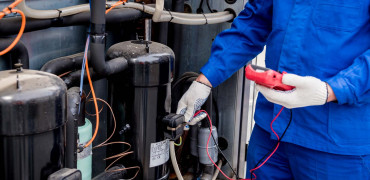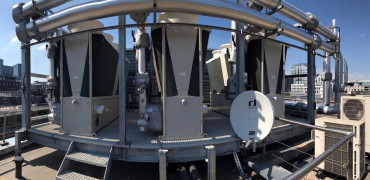Failing to plan means planning to fail. It's a business management cliché, but it can often be true when it comes to the service and maintenance of building systems such as air conditioning.
The first reason to schedule regular maintenance is to ensure manufacturer warranties protect your equipment.
All manufacturers set minimum servicing requirements to ensure their equipment is maintained. But there are other compelling reasons to take a planned approach to service and maintenance.
It's also very likely to lead to a breach of legal requirements
A reactive approach
An excellent way to think about this is to consider what happens if there is no maintenance plan, referred to as 'Reactive' maintenance. Building owners and managers respond to problems with equipment as they arise, whether it's a faulty light bulb or malfunctioning chiller.
The reactive method has some merits as an approach to maintenance. For example, there are low up-front costs. It's also a simple 'system' as maintenance only occurs when equipment breaks down.
While that might be fine for some non-critical equipment in a building, it is far from the most effective way to ensure good building performance or happy and productive occupants.
And it's doubtful that many commercial building managers apply the reactive approach to their entire estate.
Reactive maintenance is a risky strategy when it might result in the failure of vital systems such as cooling systems in summer or heating in winter.
It's also very likely to lead to a breach of legal requirements for many areas of the building (e.g. water treatment).
Planned and preventative
So, suppose building owners are already meeting minimum requirements set by manufacturers and regulations. In that case, they are, to some extent, already planning their maintenance - even if it's a diary entry to book a service once a year.
But setting up a planned preventative maintenance (PPM) schedule need not be complex.
On the contrary, working with a professional maintenance team brings many additional benefits: less operational risk, more predictable costs, extended equipment lifetime and better energy performance (to name a few).
Bringing in specialists to maintain equipment such as chillers, for example, also provides peace of mind around equipment performance and safety – and means that occupants enjoy good indoor comfort year-round.
Remote monitoring
We work with many clients at Mitsubishi Electric Service and Maintenance to bring PPM together with the latest intelligent, connected technologies. For example, if PPM is combined with remote monitoring technology, service teams can monitor the performance of chillers continuously, even when they're not on-site.
Data from equipment can be collected and sent via the internet to remote monitoring centres where it is analysed. Any deviation in performance patterns (no matter how small) will be detected automatically and, if necessary, generate a response from maintenance teams.
As an added benefit, if there is a problem with a piece of equipment, remote monitoring makes it more likely that an engineer can arrive with the correct kit to put things right.
The combination of planned maintenance and technology makes an ideal approach for today's busy facilities and building managers.
Service and maintenance can be automated and time-efficient. What's more, it delivers customer peace of mind along with outstanding building services performance.
Graham Martin is Business Development Manager




